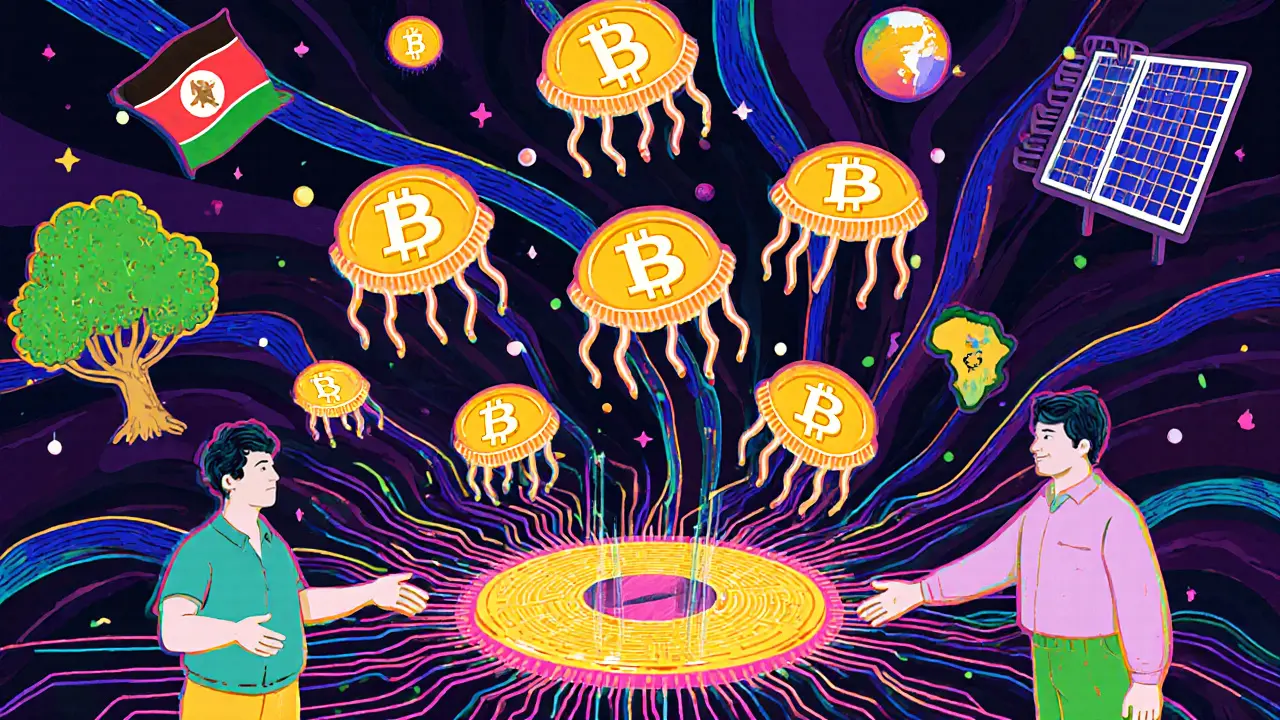Carbon Credit Trading: How Blockchain Is Changing Carbon Markets
When you hear carbon credit trading, the buying and selling of permits that allow companies to emit a certain amount of carbon dioxide. Also known as carbon offsets, it's a system designed to reduce global emissions by putting a price on pollution. But in 2025, it’s no longer just about governments and big corporations signing papers. Blockchain is turning carbon credits into digital assets you can track, trade, and verify in real time.
This shift connects directly to RWA tokenization, the process of turning real-world assets like land, gold, or carbon credits into blockchain-based tokens. Companies like BlackRock are already tokenizing Treasuries — why not carbon? Tokenized carbon credits mean smaller investors can buy fractions of a credit, not just whole ones. They’re immutable, auditable, and can be programmed to auto-execute when certain conditions are met — like a forest being verified as preserved by satellite data.
And it’s not just theory. Projects are already testing this on-chain. A carbon credit issued in Brazil, verified by a decentralized oracle, can now be traded on a DeFi platform without a middleman. That’s a big deal because traditional carbon markets have been plagued by fraud, double-counting, and lack of transparency. With blockchain, every credit has a clear history — who issued it, who bought it, and whether the underlying project actually delivered the promised emission reduction.
But there’s a catch. Regulations are catching up. The EU’s MiCA rules don’t yet directly cover carbon credits, but they set the tone for how digital assets must be reported, licensed, and secured. Meanwhile, U.S. agencies like OFAC are watching for crypto-based carbon scams — especially those promising fake offsets tied to nonexistent reforestation projects. If you’re trading these tokens, you need to know if the issuer is legit, if the credit is verified by a third party, and whether it’s tied to a real, measurable project.
What you’ll find in the posts below aren’t hype pieces or marketing fluff. They’re real, data-backed breakdowns of how tokenization, regulation, and crypto infrastructure are reshaping carbon markets. You’ll see how carbon credits are being bundled with other real-world assets, how scams are popping up in the same spaces as legitimate projects, and why some crypto platforms are quietly becoming carbon marketplaces — not just for traders, but for climate action.
How Carbon Credit Trading on Blockchain Works in 2025
Carbon credit trading on blockchain turns verified emissions offsets into digital tokens, enabling transparent, instant, and fractional trading. Learn how it works, key platforms, and why quality matters more than tech.
